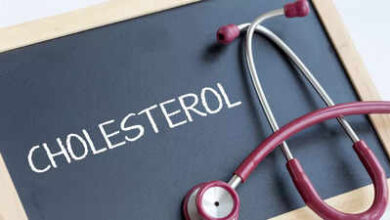Young People’s Irregular Heart Rhythm: Recognizing the Symptoms, Signs, and Treatment Options
A proxy for cardiac arrhythmias, irregular heart rhythms may impact people of all ages, including young ones. Even though symptoms are usually benign, they may nonetheless have a big impact on general health and heart health. It seems that 40 out of every 100 heart patients may be expected to have a cardiac condition of some type, most often including an irregular pulse.

What are a few of the most typical reasons of irregular heartbeat?
A. Uncontrollably generated electrical activity from an unexpected site is usually the cause of irregular heart rhythms, which may include ventricular arrhythmia, atrial fibrillation, and other disturbances of the heart’s normal electrical signaling.Arrhythmias in youth may be brought on by a number of things, such as congenital cardiac problems, underlying illnesses, medication side effects, genetic predispositions, lifestyle choices, stress, and anxiety.
Non-cardiac conditions like lung illness or electrolyte imbalances like changes in sodium and potassium levels may also cause rhythm abnormalities. Periodically, rapid, regular heartbeats that last for a short period might likewise be seen as abnormal. While abnormal isolated electrical activity from the ventricle, the lower chamber of the heart, may be deadly, abnormal activity from the atrium, the upper chamber of the heart, is generally not. When taking the patient’s pulse, you might feel for a decrease or miss a beat, which indicates this.
What signs of irregular heart rhythm are common?
A. Early identification and management of abnormal heart rhythms depend on the ability to recognize the signs and symptoms of the condition. Young people often have palpitations, which are feelings of a fast, fluttering, or hammering heartbeat; they may also experience dizziness or lightheadedness, syncope, chest pain, shortness of breath, and exhaustion. It’s crucial to remember that certain arrhythmias can not cause any symptoms or be invisible, which makes it difficult to recognize them without a medical examination.
What is the treatment plan for irregular heart rhythm?
A. Various diagnostic tests may be used by healthcare professionals to evaluate a young person suspected of having an arrhythmia in order to evaluate cardiac rhythm and function. These could include an echocardiogram (heart ultrasound imaging), a Holter monitor (a portable device for continuous heart rhythm monitoring), an electrocardiogram (ECG or EKG), an event recorder (a device worn for extended periods of time to capture intermittent arrhythmias), and in certain cases, electrophysiology studies performed in a cardiac catheterization laboratory.
An Electrophysiology (EP) Lab, a specialist institution prepared to undertake diagnostic and interventional treatments linked to cardiac arrhythmias, is another efficient means of treating abnormal heart rhythms. Healthcare experts, usually cardiologists with expertise in electrophysiology, employ state-of-the-art tools and technology in the EP lab to identify and treat a range of cardiac rhythm abnormalities. These treatments include therapeutic therapies like radiofrequency ablation (RFA) to rectify faulty electrical pathways in the heart tissue, as well as electrophysiology examinations (EPS), which record the electrical activity of the heart.
Q. How may children’s irregular heart rhythm be avoided?
A. The kind, intensity, and underlying cause of arrhythmias in young individuals determine the course of treatment. Many times, changing one’s way of living to reduce stress, exercise often, eat healthily, and abstain from stimulants like coffee and nicotine will help control the symptoms. Furthermore, drugs for cardiac rhythm and rate management may be administered.
Young individuals may have irregular heart rhythms for a variety of causes, which may have serious consequences for both general health and heart health. Early identification and management of arrhythmias depend on the ability to recognize their symptoms. With the development of diagnostic techniques and therapeutic alternatives, young people with arrhythmias of the heart may be properly treated to successfully control their disease and have happy, healthy lives.







